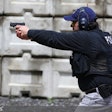All through the academy, your recruits are told horror stories of their future training officers and the “FTO program.” Police work is like most vocations where there are rites of passage. People beginning this career wonder about the rites of passage and trials of fire that they will face as they join the profession.
If you want your recruits to perform better, my advice is to tell them what to expect in the field training program before it begins. Don’t just let them sit there and worry about what they will have to endure. Let them know in advance. And don’t exaggerate to scare them. Your goal here is to ease their anxiety so that they can concentrate on the job and learn what they need to know to be effective officers. Don’t make things worse by spreading more bull.
Training Preview—when I was the commander of the FTO program in my prior department, I immediately found out that it was beneficial for the recruits to have a training session about the training program. Due to the academy scheduling, there would always be a day that the department would have the recruits prior to graduation. This was the day to present the overview to the FTO program.
I was shocked to discover that some departments never do this. In most agencies, recruits go straight from the steps of the graduation stage to the FTO’s car without a briefing; talk about culture shock. Even the military gives you a briefing to prepare from one training station to the other.
FTO Program 101—At the start of my field training prep program, each recruit received a field training recruit manual. This had a complete guide to the program. It also had explanations of all the terms, abbreviations, and acronyms that we would be using in the FTO program and a projected schedule of all the required phases and boards they had to complete.
They were also told what the expectations of them would be in each week and phase, what they would be required to do to progress to the next phase, and how each week and phase would have a higher degree of difficulty and more responsibilities.
The prep manual included samples of the grading, rating, and daily observation report (DOR) sheets that their FTOs would use to report on their progress. It also contained a bunch of other forms, including a sample of the Explained, Demonstrated, and Performed (EDP) sheet that their FTO would use to document their skills.
Yes, this was a thick manual.
In the class, we explained the responsibilities of the primary FTO and secondary FTO and how their roles were different. We also discussed the job of the FTO sergeant and his or her role in the training process.
Success starts with preparation and it is never too early to begin this process. I think you are doomed if you wait for the recruit’s first day at the station. They will have far too many things spinning in their heads; some may be myths or demons that should have been slain at the onset of their training.
Give your recruits every benefit; let them know how the field training program works and what to expect. The program is condensed enough. Why waste precious training time catching up? Their success is your department’s success.













